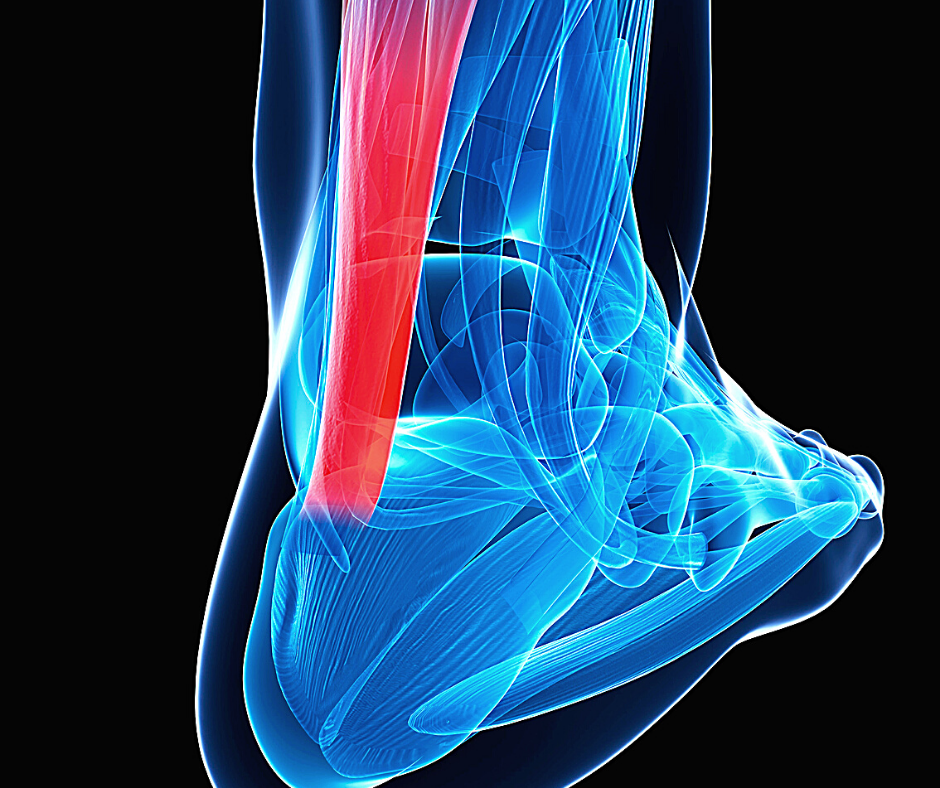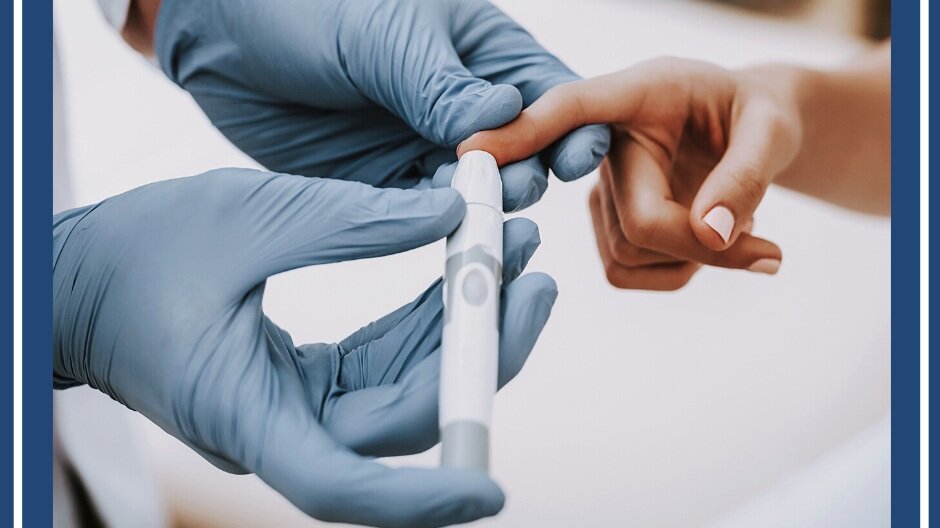Mangiarelli Rehabilitation Physical Therapy Blog
How To Improve Your Ankle Mobility
Today, Mangiarelli Rehabilitation physical therapist, Bobby, demonstrates three exercises to improve ankle mobility. The ankle is a hinge joint connecting the foot and lower leg that allows our foot to move through a wide range of motion and perform daily activities of walking, squatting, and climbing stairs. Ankle mobility is critical to not only accommodate movement, acceleration, and sudden changes of direction in daily tasks and sports, but also takes stress off of and prevents injury in the knees, legs, and hips.
Physical Therapy for Wrist and Hand Injuries
Wrist and hand injuries are common as the complex structure of the wrist and hand are susceptible to irritation from overuse at work or sport or from excessive force placed on the wrist or hand when breaking a fall. Physical therapy is an effective treatment for wrist and hand injuries, helping control swelling and restoring range of motion, strength, and ability in the wrist and hand through manual therapy, therapeutic exercise, and functional training.
10 Tips for a Healthy Back
Back pain is one of the most common reasons people seek physical therapy. Nearly 80% of Americans will experience back pain at some point in their life. However, there are numerous ways to support spinal health and prevent back pain, such as regular exercise, an ergonomic workspace, physical therapy, and proper lifting techniques. Check out our latest blog for our 10 Tips for a Healthy Back!
Temporomandibular Joint Disorder (TMD) Infographic
The jaw joint is one of the most complex joints in the human body, allowing you to open your mouth, chew, talk, and yawn. Temporomandibular joint disorder (TMD) is a disorder of the temporomandibular joint (TMJ), which is a hinge joint that connects the jaw to the skull in front of each ear. Physical therapy offers a non-invasive treatment option for TMD that can ease pain, restore normal jaw movement, and lessen daily stress on the jaw.
Total Joint Replacement Rehabilitation
Total joint replacement surgery is a major surgery requiring careful preparation and an effective post-surgical rehabilitation program to ensure pain-free function and mobility of the joint. Total joint replacement surgery removed the entirety of the damaged joint, replacing it with artificial parts to maintain joint function. Physical therapy plays a critical role in successful rehabilitation of the new joint and restoring movement, strength, flexibility, and range of motion to the joint for a timely return to daily activities, work, and sport.
#NationalHeartMonth: Physical Therapy for Cardiovascular Health
February is #NationalHeartMonth, a month to highlight the importance of cardiovascular health and effective ways to prevent and address cardiovascular disease. Cardiovascular disease is the leading cause of death in the United States; however, it is preventable through lifestyle choices, including exercise which prevents the onset and development of cardiovascular disease. Physical therapists help individuals exercise safely and effectively, designing a customized exercise program to prevent cardiovascular disease and using exercise as a therapeutic tool to improve the fitness and aerobic capacity of cardiovascular disease patients.
Physical Therapy for Turf Toe
Turf toe is a common injury among athletes who compete on artificial turf. Turf toe occurs when the big toe is forced into extreme positions of hyperextension, causing a sprain in the main joint of the big toe. Turf toe can happen when an athlete pushes off to sprint or is tackled with the front of the foot fixed and jammed into the ground. Physical therapy is key to avert and limit stiffness in the big toe and safely heal and strengthen the injured area.
Common Swimming Injuries: Prevention and Treatment
Competitive swimming can place swimmers at a higher risk of shoulder pain due to the repetitive overhead motion required. The majority of swimming injuries are related to the shoulder, although injuries to the neck, back, and knee are also common. Physical therapy addresses these injuries through sport-specific training and a comprehensive rehabilitation program to improve strength, endurance, mobility, and stability.
Pulled Muscle vs. Pinched Nerve [Infographic]
How do you know whether you’re suffering from a pulled muscle or a pinched nerve? Both a pulled muscle or a pinched nerve may cause severe pain and limit your mobility, function, and ability to complete daily tasks. Being able to ascertain the difference between a pinched nerve and a pulled muscle is critical to ensure you receive the correct treatment and return to your activities quickly and safely.
Patellofemoral Pain Syndrome Physical Therapy Treatment
Check out our latest blog on physical therapy treatment for Patellofemoral Pain Syndrome! Patellofemoral pain syndrome (PFPS) is one of the most common types of knee pain, causing pain at the front of the knee and under and around the kneecap. Physical therapists treat PFPS with a customized exercise rehabilitation program, targeting specific muscles of the hip and knee to reduce pain and retrain hip and knee movement patterns.
Industrial Rehabilitation [Infographic]
At Mangiarelli Rehabilitation, we provide a comprehensive industrial rehabilitation program for injured workers to support their recovery and return to full functional capacity and strength. We work together with the injured worker’s physician, case manager, and all those involved in their care and recovery to minimize limitations and decrease time away from work. Check out our infographic to learn more about industrial rehabilitation at Mangiarelli Rehabilitation!
Achilles Tendonitis Management with Physical Therapy
The Achilles tendon is the largest and strongest tendon in the body that allows you to run, jump, and stand on the balls of your feet. Achilles tendonitis is an inflammation of the tendon, often due to chronic overuse, that leads to swelling, pain, and irritation. Physical therapy is the most common treatment for Achilles tendonitis, decreasing pain, strengthening the affected area safely, improving mobility and flexibility, and allowing patients to return to daily activities and sports in a timely manner.
Physical Therapy Treatment After a Mensicus Tear
A meniscal tear is a common injury in athletes that involves the tearing of the knee’s cartilage. The meniscus is a disc of cartilage that cushions and stabilizes the knee and allows for fluid movements in various directions. Physical therapy is critical following a meniscal tear and surgery in order to heal properly and restore strength and movement to the knee for a safe return to sport. Check out our video of a student athlete’s progress during physical therapy following a meniscal tear and meniscectomy.
Rotator Cuff Injury [Infographic]
The rotator cuff allows the shoulder and arm significant rotational and stretching mobility. Rotator cuff injury is very common due to irritation and inflammation of the tendons. Whether healing from rotator cuff tendinitis, a rotator cuff tear, or recuperating post-surgery, physical therapy can help address pain and restore range of motion, coordination, and strength to the shoulder. Check out our infographic to learn more!
Seniors, Covid-19, and the Danger of Deconditioning
Physical deconditioning is a significant impact of the isolation-driven inactivity in seniors during the Covid-19 pandemic. Lack of movement contributes to reduced physical fitness, strength, and mobility, leading to increased vulnerability to falls and fractures. Physical therapy can effectively address deconditioning in seniors and improve their physical function and mobility gradually and safely through an exercise conditioning program tailored to the senior’s specific needs and ability.
Sports Medicine with BTE PrimusRS at Mangiarelli Rehabilitation
Mangiarelli Rehabilitation physical therapist, Mike, explains how the BTE PrimusRS testing equipment is used in the clinic's sports medicine program for the treatment of injured athletes. The BTE PrimusRS allows our therapists to determine an athlete's ability, progress, and return to sport based on objective measurements from time of injury to return to sport.
Physical Therapy for Basketball Injuries
Basketball is a fast-paced, intense sport demanding a high level of athleticism, endurance, and agility. Whether your goal as a basketball player is to prepare effectively for the season or return to sport after an injury, Mangiarelli Rehabilitation sports medicine physical therapists are qualified to guide you through a pre-season comprehensive exercise program and provide excellent rehabilitative care to ensure you recover from injury and return to your sport safely and in optimal form.
Diabetes Management and Physical Therapy
November is National Diabetes Awareness Month. Diabetes is a condition in which the body either does not produce enough insulin or does not respond normally to insulin, causing glucose levels in the blood to become too high. In the United States, 34.2 million Americans (1 in 10) have diabetes and 88 million American adults (1 in 3) have pre-diabetes. Physical therapists can help reduce diabetic symptoms and guide diabetic patients through a personalized exercise program, which lowers blood sugar levels and improves mobility.
Is it a Pulled Muscle or a Pinched Nerve?
Muscles and nerves are susceptible to and common sources of injury in the body. Both a pulled muscle or a pinched nerve can cause severe pain and limit an individual’s function and mobility. It is crucial to recognize the difference between a pulled muscle and a pinched nerve in order to seek the proper treatment in a timely manner.
How Physical Therapy Slows Symptoms of Alzheimer’s Disease
November is National Alzheimer’s Disease Awareness Month. Alzheimer’s disease is a progressive condition that damages brain cells, limits cognitive function, and over time, inhibits bodily functions. Alzheimer’s disease is a condition that usually develops with age, affecting 10% of Americans over age 65. Physical therapy can slow the progression of the disease and improve symptoms of Alzheimer’s disease.








![Pulled Muscle vs. Pinched Nerve [Infographic]](https://images.squarespace-cdn.com/content/v1/5e419cdc97af032560004b99/1611066175350-N1AZ3VBB7OAOTIQ8UNXM/1.jpg)

![Industrial Rehabilitation [Infographic]](https://images.squarespace-cdn.com/content/v1/5e419cdc97af032560004b99/1608659397771-FIGQMDORUPWZR3DBD1NG/1.jpg)


![Rotator Cuff Injury [Infographic]](https://images.squarespace-cdn.com/content/v1/5e419cdc97af032560004b99/1607098111552-AYB3DJTVHMZCZ1KKOA0P/1.jpg)

















